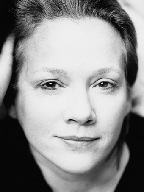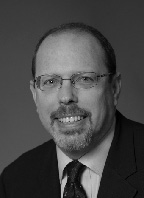Even though the leaves are changing to red and gold, Connecticut is getting greener every day. With nearly 30 buildings currently LEED Certified by the US Green Building Council (USGBC) and almost 125 registered for future certification, Connecticut architects, developers and sustainability experts are creating a greener future for our schools, hospitals, residences, offices and retail centers. Perkins Eastman is leading the way with the new headquarters for GE Energy Financial Services, recently rated LEED Gold-CI - only the second project in Connecticut to attain this status and one of only 111 such projects in the entire United States - and the recently completed Metro Green Apartments seeking LEED Gold-NC, Phase 1 of a LEED-ND pilot project.
Located downtown since 1998, the Stamford office of international design and architecture firm Perkins Eastman is committed to designing environmentally sensitive, energy efficient, and sustainable projects that are healthy to occupy. Minimizing the impact of our buildings on the environment is central to the firm's architectural/design practice. With 125 LEED Accredited Professionals firm-wide, more than 50% of Perkins Eastman's Stamford office's staff are LEED AP.
To achieve LEED Gold Commercial Interiors for GE Energy Financial Services in Stamford, Perkins Eastman teamed with Sustainable Design Collaborative as LEED consultant to develop a strategy for the 280,000 s/f new headquarters, including 100% use of green power from wind, 30% reduction in water usage, 20% use of recycled materials in the project's interior finishes, 20% use of materials manufactured within a 500-mile radius, "cradle-to-cradle" furniture, use of low volatile organic compounds (VOCs) emitting materials, and incorporation of alternative transportation, including provision for bicyclists. More than 75% of waste was diverted from landfills during construction. Innovative green design features include a series of branding walls that educate visitors and staff.
"The decision to go green dovetailed with GE Energy Financial Services' strategy to create an open and collaborative work environment which affords natural light to all employees," said Elisabeth Post-Marner, design principal for the job. "Also, choosing not to build new and housing its offices in an existing building that was renovated, while maintaining much of the existing core and shell, added to the environmentally responsive design."
On the regional housing front, Metro Green Apartments is a new community of 50 affordable housing apartments located on Henry St. in Stamford. It is in the first phase of a comprehensive transit-oriented revitalization development project that will eventually include 238 mixed-income units and a 17-story office tower. The project is being developed by Jonathan Rose Companies and Malkin Properties. Perkins Eastman is the architect for the residential portion of the development. The phased development is participating in the U.S. Green Building Council's Neighborhood Development Pilot Program (one of approximately 240 such developments in the U.S.), and Metro Green Apartments is independently seeking Gold Certification under the U.S. Green Building Council's LEED New Construction program.
The theme of environmentally responsible design and construction was incorporated by Perkins Eastman throughout the building. Environmentally-friendly design elements include cabinets that are free of added urea-formaldehyde and low or no-VOC paint. Limiting PVC in the building was not a LEED requirement but is an initiative that Jonathan Metz, a project manager at Perkins Eastman, strongly believes in for a healthy living environment. Low flow shower heads were tested at home by Metz and his family to ensure that tenants would still enjoy a satisfying shower; the result is a 30% water use reduction.
A white roof counteracts the heat island effect, a result of all the dark roofs in cities absorbing heat and a contributor to global warming. The main public plaza is pitched toward a rain garden to gather and retain rain water, which is then slowly released into the storm water system, preventing a surge on the municipal system during severe rain events. To reduce the demand for potable water, and to reduce the storm water runoff, two 10,000 gallon concrete storage tanks contain and filter rain water gathered from the roof. Water use for laundry is supplemented by the harvested water during non-irrigation seasons to reduce the demand for municipal supplied potable water.
Says Perkins Eastman managing principal Pamela Loeffelman FAIA, LEED AP of these regional accomplishments, "As part of our continued interest and commitment to developing a sustainable building practice, we have looked for new and unusual challenges to broaden our exposure and knowledge of sustainable principles and their applications; these projects are spot-on with those goals."
Elisabeth Post-Marner AIA, IIDA, LEED AP is the design principal in charge of Perkins Eastman's corporate interiors practice and Jonathan Metz, AIA, LEED AP is a senior associate at Perkins Eastman, Stamford, Conn.
Tags:










